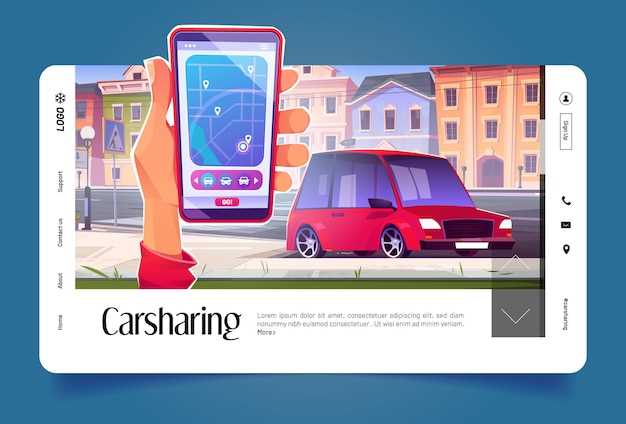
In the competitive landscape of automotive sales, the quality of your photos can make all the difference in attracting potential buyers to your listings. A captivating image not only showcases the vehicle’s features but also evokes emotions, allowing the viewer to envision themselves behind the wheel. To maximize your sales potential, it’s crucial to understand the key elements that contribute to stunning car photography.
First impressions matter, and in the digital marketplace, your photos are often the first interaction a potential buyer has with your offering. Therefore, it’s important to focus on creating high-quality images that are both eye-catching and informative. In this article, we will explore essential tips and techniques for capturing car photos that not only enhance your listings but also drive interest and increase your chances of a successful sale.
From perfect lighting to choosing the ideal angles, every detail counts when it comes to creating an alluring image. Whether you are a seasoned photographer or a newcomer to the world of automotive photography, the following tips will empower you to elevate your game and produce compelling visuals that stand out in a crowded market. Prepare to transform your car photos from ordinary to extraordinary, ultimately boosting your sales and leaving a lasting impression on potential buyers.
Choosing the Right Lighting for Car Photography

Lighting plays a crucial role in capturing stunning car photos that attract potential buyers. The right lighting can enhance the car’s features, create depth, and evoke emotions that resonate with viewers. It is essential to consider the time of day, natural light conditions, and artificial lighting techniques when planning your shoot.
Natural light is often the best choice for car photography. The golden hour, which occurs shortly after sunrise and before sunset, provides soft, warm light that reduces harsh shadows and highlights. During this time, colors are richer, making the car look more appealing. Avoid shooting during midday when the sun is high, as it can create unflattering glare and lose details on the vehicle’s surface.
If shooting indoors, ensure you have adequate artificial lighting. Softbox lights or LED panels can simulate natural light and allow for better control over shadows. Position lights at various angles to illuminate the car evenly, avoiding overly bright spots that can distract from the vehicle’s curves and finishes.
Experimenting with backlighting can also produce dramatic effects. This technique involves placing the light source behind the car, creating a silhouette effect that highlights the shape and design. However, be cautious not to lose the car’s details in extreme shadow.
Using reflectors can enhance the light and fill in shadows, creating a balanced exposure. Position reflectors to bounce light onto the car’s surface, highlighting its contours and features. This can be particularly effective for showcasing metallic finishes and colors.
In conclusion, effective lighting is essential for captivating car photos that stand out. Whether using natural light or artificial sources, understanding how to manipulate light will elevate your images and boost your sales potential.
Composition Techniques to Highlight Vehicle Features
Effective composition is crucial in car photography as it emphasizes the vehicle’s unique attributes and boosts its visual appeal. One technique to consider is the rule of thirds, where the frame is divided into a 3×3 grid. Positioning the car along these lines or at their intersections draws attention to key features such as the grille or headlights.
Another effective strategy is the use of leading lines. Incorporating roads, fences, or pathways that direct the viewer’s gaze towards the car can enhance the visual narrative. This technique adds depth to the image while showcasing the car’s design in a dynamic context.
Framing is also essential; utilizing natural elements such as trees, buildings, or even other vehicles can create a frame within the frame. This technique not only highlights the car but also situates it within an engaging environment, adding context and interest.
Experimenting with different angles can significantly affect how the vehicle is perceived. Low-angle shots can impart a sense of power and dominance, while high-angle shots may provide a broader overview, showcasing the car’s contours and details. Additionally, capturing close-ups of specific features like wheels or the interior can help to convey craftsmanship and luxury.
Finally, consider the background. A clean, uncluttered backdrop ensures that the car remains the focal point. Alternatively, a contextually relevant environment can enhance the story being told about the car. Ultimately, these composition techniques work together to create car photos that not only attract attention but also communicate the vehicle’s essence effectively.
Editing Tips to Enhance Car Images for Listings

Enhancing car images for listings can significantly impact your sales. The first step is to use quality editing software that allows you to adjust various elements of your photos. Start by cropping the images to remove any distractions, focusing solely on the vehicle. This helps potential buyers concentrate on the car’s features.
Next, adjust brightness and contrast levels to ensure the car’s colors are vibrant and true to life. Highlighting the best features of the vehicle, such as its body lines and shiny surfaces, will make it more appealing. Be careful not to overdo these adjustments, as overly edited photos can misrepresent the car.
Another useful technique is to use saturation and hue adjustments to enhance the car’s color without altering its natural appearance. This is especially effective for cars with unique paint jobs or finishes. Additionally, consider using sharpening tools to define edges and details, creating a more professional and polished look.
Don’t forget about background removal or blurring. A simple, clean background draws attention to the car and eliminates distractions. You can replace it with a plain color or a subtle gradient that complements the vehicle. This creates a cohesive look across your listings.
Lastly, adding shadows or reflections can create a more dynamic image. These effects can give depth and realism to the photo, making the vehicle stand out in the listings. Remember to maintain balance; always aim for a natural appearance, ensuring buyers feel confident about what they see.




